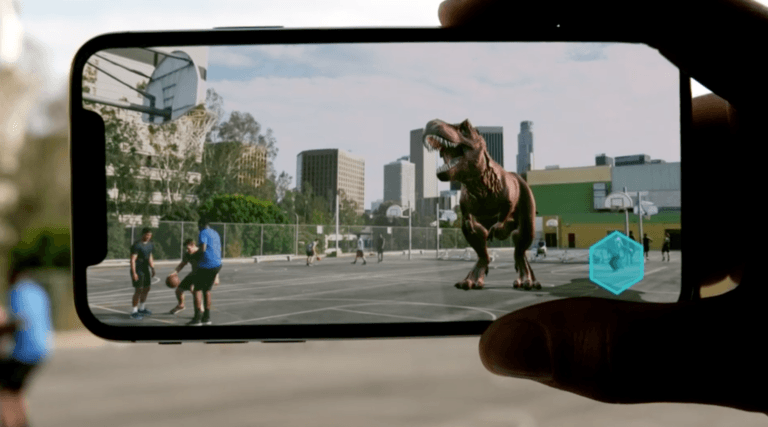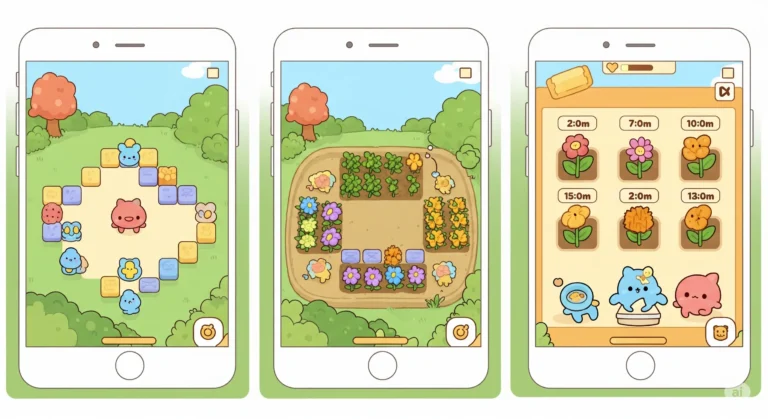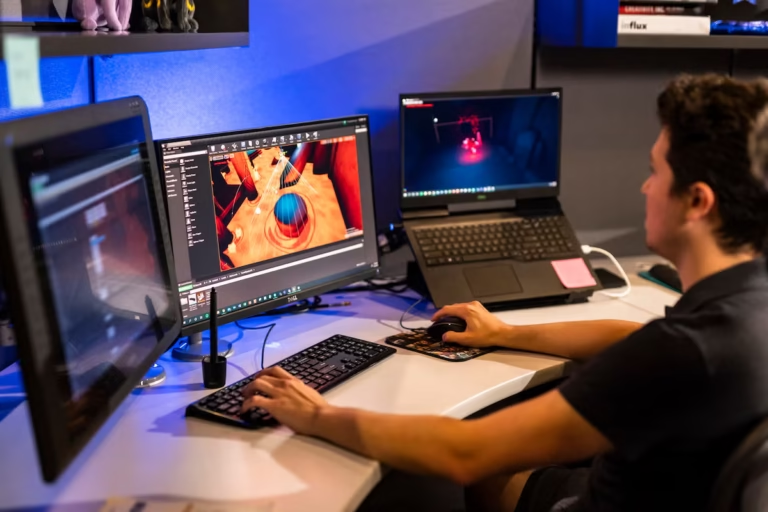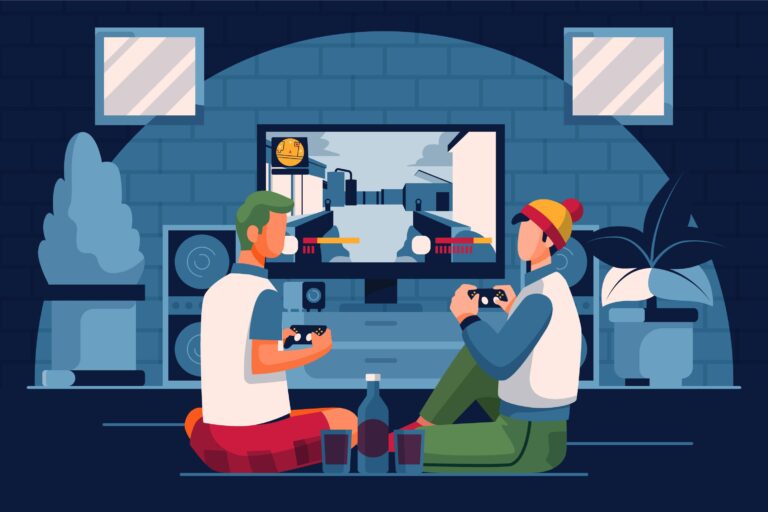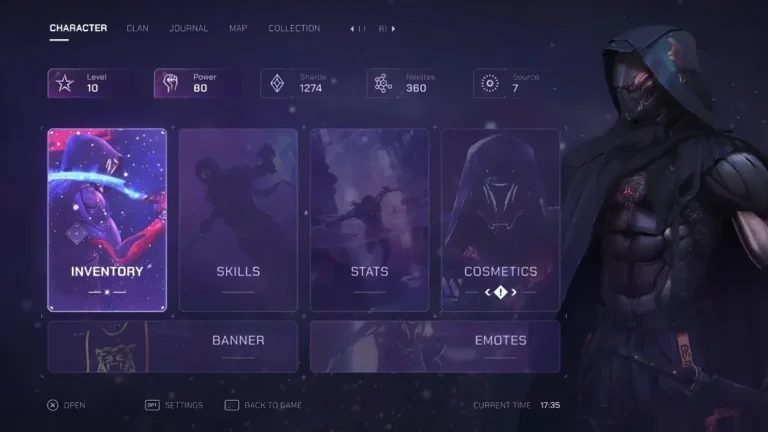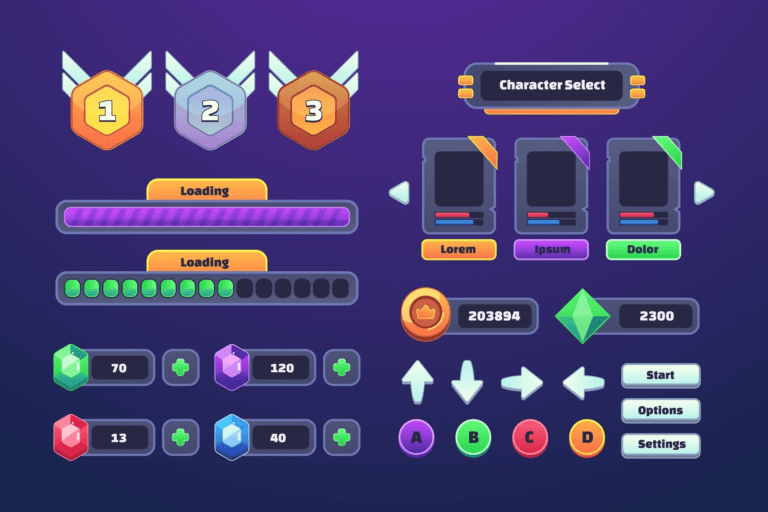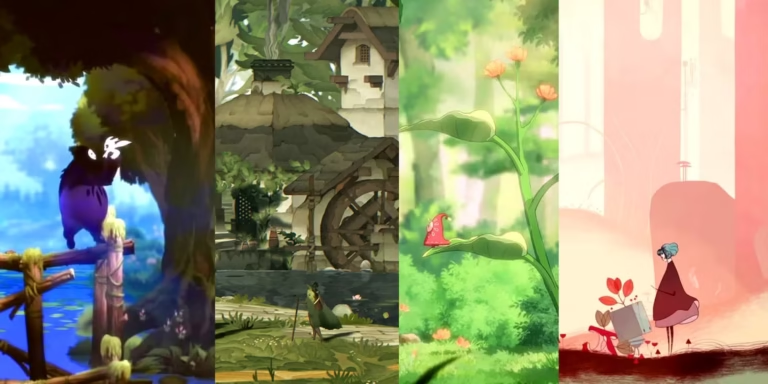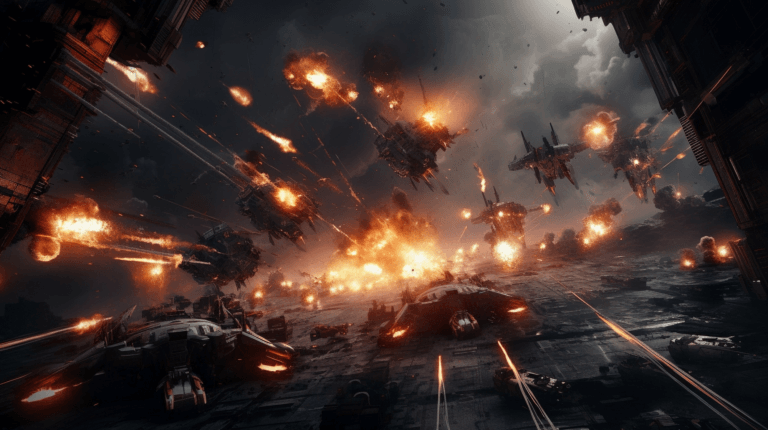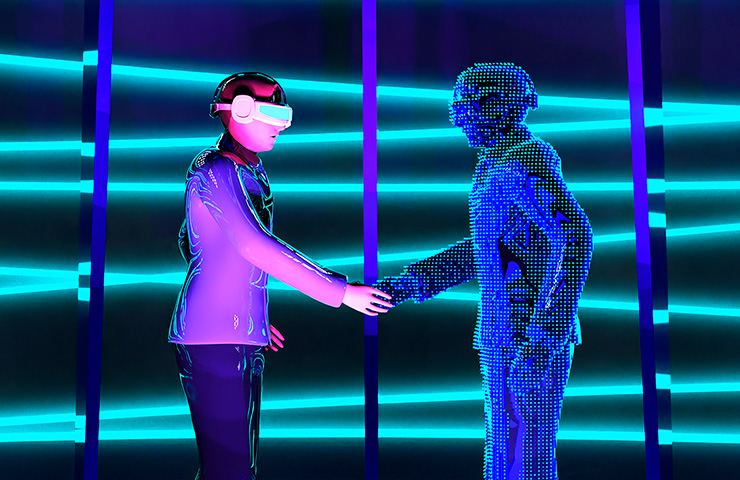Which part of a game is more important to you? Are you all about engaging gameplay? Or maybe climbing the online leaderboards of a competitive game is your thing. But no matter which kind of gamer you are, we can all agree that a game’s visuals and art style play a huge role in attracting you to a game or repulsing you from it. Low poly game art refers to a style of 3D computer graphics where the 3D models are constructed using a relatively small number of polygons (usually triangles) compared to high-polygon models. These days there are AAA games with impressive graphics that seem more real than reality; however, if you are an indie developer, you probably don’t have the resources required to produce such high-fidelity visuals. But fear not! After reading this guide, you will know exactly what to do in order to dazzle your audience with the magic of effective low-poly game art!
The truth is that you don’t need to spend a truckload of bucks on hiring an Avengers-level team of artists to make your games successful. In fact, did you know that the top 2 best-selling game franchises in the entire history of video games are “Mario” and “Tetris”? Other than those, many recent hits in the game industry were games with really simple graphics. Remember “Meat Boy”? Or “Floppy Bird”?
In this guide, you will learn that while having impressive graphics is very important, that doesn’t mean you need photorealistic graphics and models with 999999 polygons to create a game that can hit the jackpot for you.
Need Game Art
Services? Visit our Game Art Service page to see how we can help bring your ideas to life!

What is Low Poly Game Art?
Low-poly game art is a 3D modeling style that has gained popularity in recent years. The style is characterized by the use of a small number of polygons in the creation of 3D models. The goal of low-poly game art is to create a minimalist and stylized look that emphasizes the overall form and shape of the model rather than fine details. This style is often used in indie games, mobile games, and other games with limited resources.
When Should Low Poly Game Art Be Used?
When going about creating a game’s visuals, the first thing that you need to decide on is the game art style that works best for you. We have a concise guide about various game art styles that you can check out if you want to know more about the subject; hopefully, it will help you to choose the right one.
Any kind of game can be made with any kind of graphics, and there are no general rules to help you decide on your game art style. With that in mind, some deciding factors in choosing your game art style come from your budget and your target audience. If you’re self-funding a project and your budget is around 10K, your budget has already limited the number of styles you can choose from, and it eliminates options like photorealism. Want to know how much does it cost to make a game? Then check that link out to find out.
Now even if you have an unlimited budget (which is never the case!), you need to consider your audience’s expectations. If you want to create a CoD-esque first-person shooter with explosive gameplay, low poly game art is probably not a good choice for it because FPS players usually expect top-notch graphics. On the other hand, if you want to create a runner game for mobile phones, not only do you not need to create high-fidelity graphics, but in fact, it will probably hurt your game’s success.
So, while low-poly game art can be used in a wide range of games, it is particularly well-suited for certain types of games. Some prime examples are:
Mobile Games
Low-poly game art is an excellent choice for mobile games. Mobile devices often have limited processing power and memory, and low-poly game art is lightweight and efficient, allowing for smooth gameplay on low-end devices. Keep in mind that your UI design also impacts the performance and should be in sync with your game art. We have a brief guide about mobile game UI design if you are interested.
Indie Games
Indie games are often created by small teams with limited resources. Low-poly game art is relatively easy to create compared to other types of 3D art. While even the biggest mobile game companies use low-poly game art, this means that indie developers can create visually stunning games without breaking the bank.
Artistic or Stylized Games
Low-poly game art is particularly well-suited for games with a unique and memorable art style. By simplifying the visuals, game developers can create a distinctive look that sets their game apart from others. This is particularly effective in games that rely on atmosphere and mood to create a sense of immersion.
Creating Low-Poly Game Art: Tips and Tricks
There is tons of stuff that we could discuss creating low poly game art, but you’re here for the juicy parts, not some long boring manual. So we have studied those dusty tomes and fished out the really critical parts for you to take away in a few minutes. However, if you want to know more about creating great game art, we have many more concise and practical guides on the matter in the blog section, and I highly suggest starting with this one about the principles of the game art design. Now without any further ado, let’s get to the meat of it.
Here are some tips to help you create good low-poly game art.
Plan Your Design
Before you start creating your models, it’s important to have a clear idea of what you want to achieve. Sketch out your designs and consider the shapes and forms that you want to create. Low-poly game art is all about simplification, so you’ll need to decide which details to keep and which to remove.
Spend Polygons Where It Matters
It should come as no surprise that in a low poly art style, your players’ character should enjoy the highest level of detail compared to all the other models, no matter its position or size, because that is where they are looking most of the time. Except for players’ character, the number of polys in every other model should be decided by two factors: closeness to the game camera and how fast that model moves in your game.
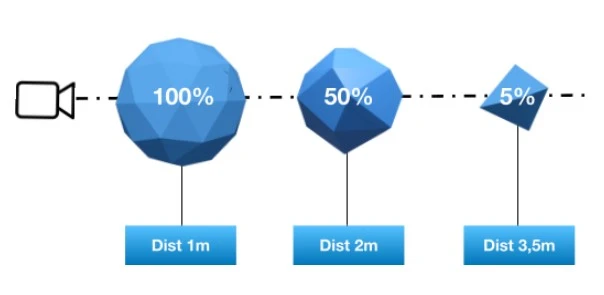
If an object is close to your game camera, it should have more detail and polygons than the objects further back, like trees, distant buildings, etc. Now if an object is close to the game camera but moves very quickly (like a passing car), you still shouldn’t spend much of your precious polygons on it.
Focus on Silhouettes
One of the most important aspects of low-poly game art is the general shape and silhouette of your models. Make sure that each model has a clear and recognizable outline, even from a distance. You can achieve this by using strong shapes and angles to define the form of your models. Knowing more about shape language can help you a lot toward refining your models in this regard.
Keep Textures Simple
Low-poly game art is often texture-driven, meaning that the textures you use can have a big impact on the final look of your models. Keep your textures simple and use a limited color palette to create a cohesive style. Don’t worry too much about adding fine details like scratches or bumps, as these won’t be as noticeable in a low-poly environment. If you know your stuff about color theory in game art, you shouldn’t have any trouble creating textures that will make your models pop out.
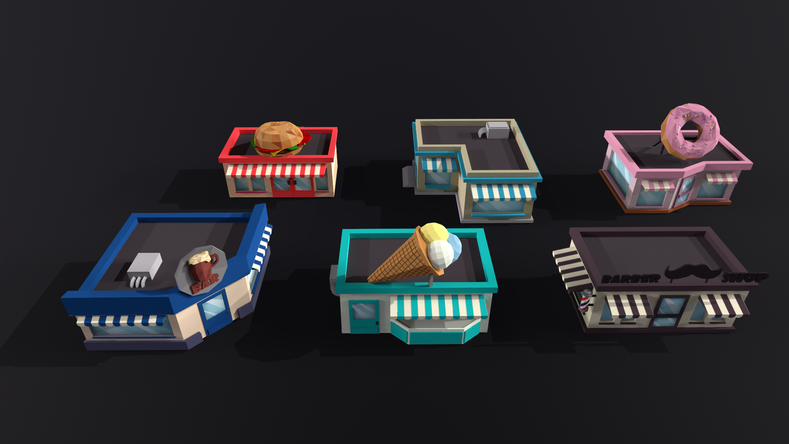
Use Light and Shadows to Your Advantage
Lighting can play a big role in creating depth and dimension in low-poly game art. Use directional lighting to highlight the shapes of your models, and use shadows to add depth and contrast. This can help create a sense of three-dimensionality in your models, even though they have a relatively low number of polygons.
Use 2D Where Possible
As we mentioned, one of the main goals of low-poly game art is to reduce the number of polygons. So you should use 2D art where your game design allows it. One of the common practices in this regard is to employ 2D backgrounds for your game. A smartly used and professionally made background can save you a lot of polygons, and your game will look even better for it. We have talked about game background design and its various styles in another article if you’re interested.
Use Polygonal Modeling Techniques
When creating low-poly game art, it’s important to use polygonal modeling techniques to keep your models efficient. This means avoiding unnecessary subdivisions and keeping your geometry as simple as possible. By doing this, you can create models that look great while still running smoothly on a wide range of hardware.
How to Use Low-Poly Game Art to Optimize Performance
Even with the benefits of low-poly game art, it’s important to keep performance in mind when designing your game. And this wouldn’t be a complete guide if we didn’t mention some optimization techniques.
Keep the Number of Assets to a Minimum
The more assets you have in your game, the more processing power your game will require. Keep the number of assets to a minimum and reuse them where possible. This will help reduce the load on your game engine.
Use LODs (Level of Detail)
LODs are a technique used to reduce the number of polygons that need to be rendered by swapping out high-poly models with low-poly models at a distance. This can help improve performance without sacrificing visual quality. By reducing the number of polygons that need to be rendered at a distance, you can maintain a high frame rate while keeping the overall visual fidelity of your game intact.
Optimize Your Models
When creating your models, it’s important to optimize them as much as possible. This means keeping the number of polygons to a minimum while still maintaining the overall look and feel of your models. You can also use techniques like normal maps and specular maps to create the illusion of great detail without actually adding additional polygons.
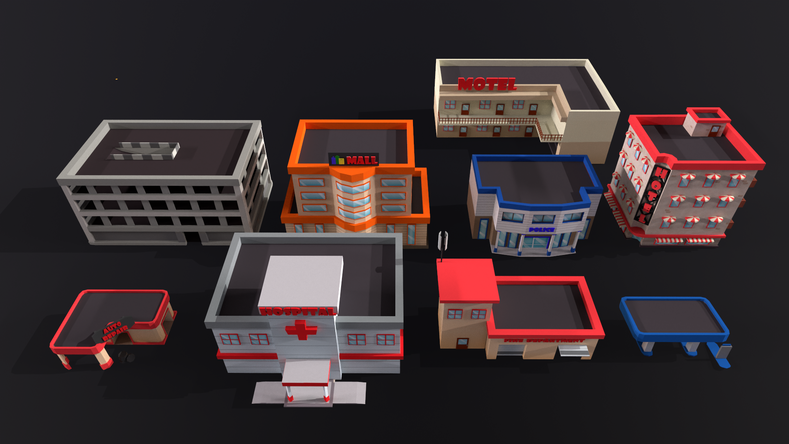
Test on Different Devices
Before releasing your game, it’s important to test it on a range of different devices. This will give you a better understanding of how well your game runs on different hardware configurations and help you optimize your game for maximum performance.
Benefits of Low-Poly Game Art
There are several benefits to using low-poly game art in your game. This guide only mentions just some of the most significant benefits, but depending on your game project, there may be a multitude of other benefits to using low poly game art.
Efficiency
Low-poly game art is much more efficient than other types of 3D art. Because it uses a small number of polygons, it is easier to render and requires less processing power. This means that games using low-poly game art can run smoothly on a wide range of hardware, from high-end gaming PCs to low-end mobile devices.
Speed and Cost of Development
Low-poly game art is relatively quick and easy to create compared to other types of 3D art. This means that game developers can create visually stunning games in less time, which can be particularly beneficial for indie developers and small teams with limited resources.
Distinctive Style
Low-poly game art has a distinctive and memorable style that can help set your game apart from others. By simplifying the visuals, game developers can create a unique look that is instantly recognizable and can help create a strong brand identity for their game.
Flexibility
Low-poly game art can be used in a wide range of games, from 2D platformers to first-person shooters. It can be used to create various environments and characters, from sci-fi spaceships to cartoon animals. This flexibility makes it a popular choice for game developers who want to create visually stunning games in a variety of genres.
Challenges of Low-Poly Game Art
While low-poly game art has many advantages, it also presents some challenges for game developers and artists. Here are a few of the most significant challenges you’re likely to face when creating low poly game art:
Detail
Low-poly game art is all about simplification, which means that fine details are often lost. This can be challenging for game developers who want to create a game with a high level of detail, such as a game that takes place in a highly realistic environment. However, techniques like normal maps and specular maps can help create the illusion of detail without adding additional polygons.
Animation
Creating animations for low-poly game art can be challenging, as the models have a limited number of polygons. This means that the animations need to be simple and efficient, which can limit the range of movements that are possible.
Realism
Low-poly game art is not well-suited for creating highly realistic environments or characters. While it can be used to create stylized and cartoonish visuals, it is not ideal for creating highly detailed and realistic models.
Examples of Low-Poly Game Art in Games
Low-poly game art has been used in many popular games over the years. These titles are just a few of them. Have you played any of them?
Minecraft
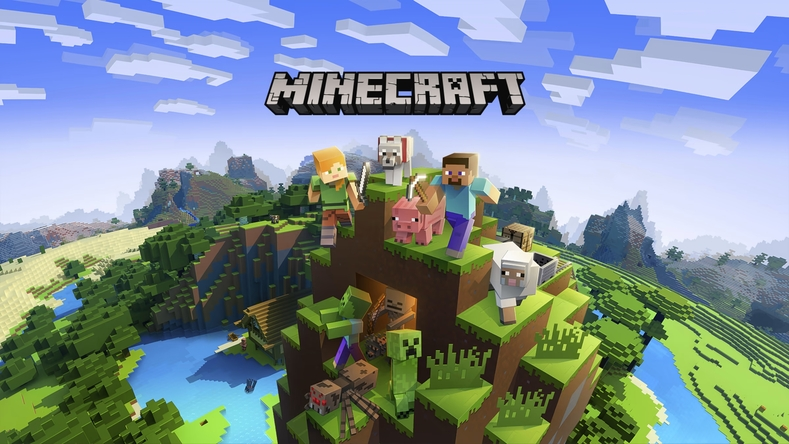
Minecraft is one of the most popular games of all time, and it uses low-poly game art to create a distinctive and memorable look. The game features blocky, pixelated graphics that have become synonymous with the Minecraft brand.
Fez
Fez is a 2D puzzle platformer that uses low-poly game art to create a unique and visually stunning world. The game features a range of environments, from lush forests to ancient ruins, all created using low-poly game art.
Journey
The journey is a game that uses low-poly game art to create a beautiful and atmospheric world. The game features a range of environments, from sandy deserts to snowy mountaintops, all created using a minimalist and stylized approach.
The Witness
The Witness is a puzzle game that uses low-poly game art to create a stunning and intricate world. The game features a range of environments, from lush forests to mysterious ruins, all created using a minimalist and stylized approach.
No Man’s Sky
No Man’s Sky is a game that uses procedural generation to create an infinite number of planets and environments. The game features a range of biomes, creatures, and terrain types, all made by algorithms and procedural techniques. This allows the game to create a vast and varied universe that is both efficient and visually stunning.
Undertale
Undertale is a game that uses cel-shading to create a cartoonish and memorable world. The game features a range of environments and characters, all created using a distinctive and unique art style. The cel-shading technique allows the game to create a look that is both efficient and visually stunning.
Bloodstained: Ritual of the Night
Bloodstained: Ritual of the Night is a game that uses a range of advanced low-poly game art techniques to create a visually stunning world. The game features a range of environments, from gothic castles to eerie swamps, all created using a combination of textures, blending techniques, and lighting.
Abzû
Abzû is a game that uses vertex painting to create a range of underwater environments that are both visually stunning and efficient. The game features a range of sea creatures, plants, and coral reefs. All were created using vertex painting to add color and detail.
Advanced Techniques for Low-Poly Game Art
While the tips and tricks outlined earlier can help you get started with low-poly game art, there are many advanced techniques that can help take your game art to the next level. Here are some examples:
Vertex Painting
Vertex painting is a technique that allows you to add color and detail to your models without using textures. By painting directly on the vertices of your models, you can create a range of effects, including color gradients, highlights, and shadows. This can be particularly effective for creating organic models, such as trees or rocks.
Procedural/Generative 3D Modeling
Procedural generation is a technique used to generate content dynamically rather than creating it manually. In the context of low-poly game art, procedural generation can be used to create environments that are both visually stunning and efficient. By using algorithms to generate terrain, plants, and other elements, game developers can create vast and varied worlds without needing to create every element manually. If you’re interested, here is an article about how artificial intelligence is reshaping generative 3D modeling.
Blending Techniques
Blending techniques can be used to create a range of effects, including weathering, rust, and grime. By blending different materials and textures together, you can create a realistic and detailed look without adding additional polygons. Blending can also be used to create complex materials, such as wood or stone, that would be difficult to create with textures alone.
Cel Shading
Cel shading is a technique used to create a cartoonish look that emphasizes the outlines and shapes of your models. This can be particularly effective in games that have a solid artistic style or that are meant to be played on mobile devices. By simplifying the textures and lighting, you can create a distinctive and memorable look that is both efficient and visually stunning.
UV Unwrapping
UV unwrapping is the process of taking a 3D model and flattening it into a 2D representation that can be used as a texture map. This is an essential technique for creating low-poly game art, as it allows you to add detail to your models without adding additional polygons. By carefully unwrapping your models and using textures effectively, you can create visually stunning games that are efficient and easy to render.
Conclusion
Low-poly game art is a popular style of 3D modeling that has many advantages over traditional 3D art. It is particularly well-suited for mobile games, indie games, and games with a unique and memorable art style. By using a range of techniques, including silhouettes, simple textures, and light and shadows, you can create visually stunning models that are efficient and easy to render.
Low-poly game art also presents some challenges for game developers, particularly in the areas of detail, animation, and realism. However, by using techniques like normal maps and specular maps, it is possible to create visually stunning games that are both efficient and detailed.
If you’re a game developer looking to create a visually stunning game with a unique and memorable art style, consider using low-poly game art. With the right techniques and a focus on performance, you can create a game that is both efficient and visually stunning, accessible to a wide range of players on a variety of hardware configurations.
Creating stunning low-poly game art is one of the game art outsourcing services that Pixune Studios has provided for many game developers around the world. Interested in working together? Leave us a comment below, or get in touch in any way you prefer. We would love to talk about your great game ideas and discuss how we can help you to sell your game idea. With us, your game will indeed look like you have hired an avengers-level team of artists!
Last but not least, we like to know if there are any low poly games that have stuck in your mind even after years. Mention them in the comments below, and we will add them to this guide!
